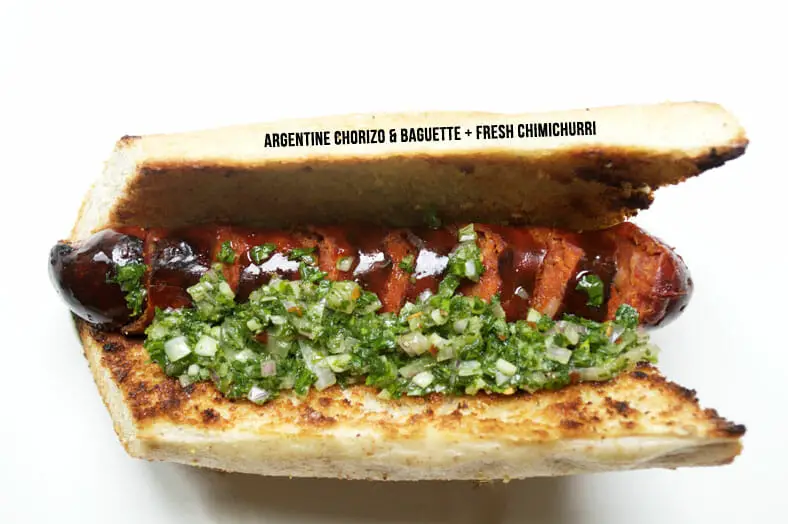Even the simplest of dishes can evoke the most complex of feelings.
While the choripan is as simple a recipe as you’ll perhaps ever get, the symbolism of the sandwich goes far deeper into the fabric of Argentina’s national identity.

Choripan, Gauchos, Cattle and Asados
The key to understanding the significance of choripan involves diving deeper into two other areas of the Argentine symbolic identity: gauchos and the art of asado.
Origins of the Gauchos
For such a relatively short-lived demographic of people, it’s amazing how much of a mark the way of the gauchos left on the Argentine identity.
Before James Dean, the gauchos were the first rebels without a cause. They were the untethered, fully autonomous rulers of the rural outskirts, free and clear of any regulations imposed on others by the revolving door of political influences for the budding Argentine nation.
While it is hard to pinpoint the exact genesis of this esoteric group, it’s thought that the first gauchos came up in mid 16th century and were mestizo offspring of incoming Andalusian settlers and local Amerindians. Both sides of this ethnological family tree lent influences that would shape characteristics that would become thought of as “uniquely gaucho.” The Andalusians – themselves heavily influenced for centuries by the Arabs and Moors – brought with them a simplified, equestrian culture that bristled with the budding colonial bureaucracies both in the Spanish mainland and their New World viceroyalties. On the other side, the gauchos are thought to have descended from the hauchús, fierce nomadic guaraní warriors originating from modern day Uruguay. It’s from the hauchús that the gauchos, for example, can trace back their addiction to maté.
Originally, the gauchos were viewed as nothing more than criminals and vagabonds to those inside the colonial settlements, and this tension between the two groups intensified in the 18th century thanks to the growing cattle industry.
Argentina, Its Cattle, and the Rise of Gauchos
The original Spanish conquistadors first introduced cattle to Argentina in the mid-16th century, and the geography of the pampas, or fertile lowlands, coupled with limited local beef demand led to an explosion in the Argentine cattle population.
By the 1700s, there was a massive boom in the cattle industry as leather hides and tallow came into high demand, especially back in Europe as luxury goods. Unlike other colonial areas in South America, the southern colonies lacked precious exportable metals (except silver), and thus the cattle industry became one of the economic backbones for the region. And since cattle supply was tightly controlled within the city limits, investors and owners of cattle expanded outwards into the rural pampas to let their cattle graze and reproduce unregulated.
It was in the pampas that the gauchos roamed, and they took the liberties of capturing, slaughtering, eating and enjoying all other benefits of these cattle. Add in their penchants for gambling, drinking, fighting, promiscuous lovemaking and other hedonistic pleasures, and the gauchos had sewn themselves quite an image with the settlers.
Over time, the external reputation of the gauchos quickly improved. By the end of the 18th century, the gauchos became the hired hands for these cattle herders, receiving payment for services to protect the prized cattle from any harmful predators of the pampas. During Argentina’s war of independence, the gauchos joined forces with the independence movement and contributed to key victories in the effort.
Into Argentina’s formation as an independent nation, many of the cultural elements of the gauchos were documented and, you could say, very much romanticized. The gauchesco style of literature and music became popularized, and the nomadic, lawless lifestyle of the gaucho encapsulated in epic poems like Martin Fierro by Jose Hernandez.
Though the gaucho lifestyle waned in the tail end of the 19th century, the romanticized versions of the gaucho have remained highly prevalent and popular in 20th century and contemporary Argentine culture, especially through traditions like the asado.
Gaucho Celebrations and Asado
Here might be a good time to point out that, technically, the asado in concept isn’t an Argentine invention. It is thought that the notion of slow grilling meats over fire very much in the asado fashion were developed well over a half million years ago.
The characteristics of the contemporary Argentine asado, on the other hand, stems from the gauchos and their time roaming the pampas. As a way to capture cattle, groups of gauchos would organize into groups of vaquerias and collectively pursue and slaughter a cattle for communal consumption. It was agreed upon that the “winnings” would be cooked and eaten in a communal setting for all to enjoy.
The asado became an integral part of gaucho culture, especially around festivities and reason for celebration. Accompanying the asado would be – in true gaucho fashion – plenty of wine drinking, dancing and enjoyment of other indulgences.
While the original asados contained the cattle meat of those caught in the hunt, the diversity of meat evolved to involve other types of meats and preparations (such as chorizo in choripan). To this day, the asado remains ubiquitous in Argentine food culture – it’s even considered the national dish in some ways.
Before diving into the recipe itself, it’s useful to note that choripan is thought to have been an invention of the gauchos during particularly festive and celebratory asados.
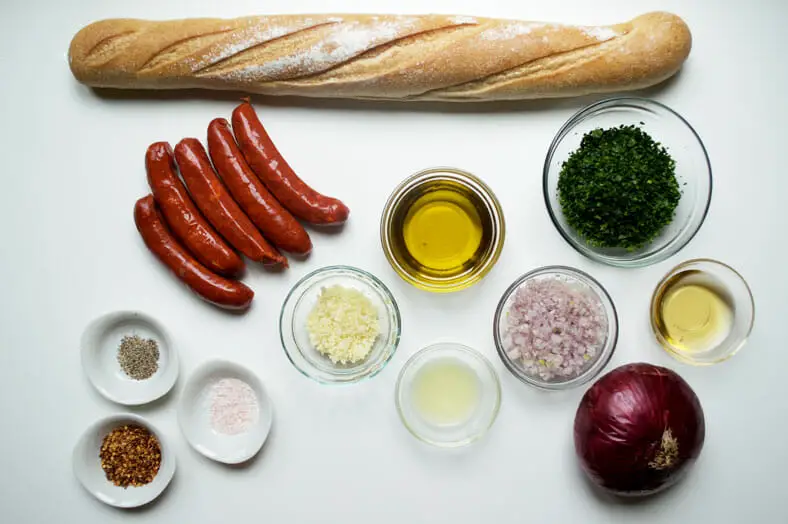
About the Recipe
While the recipe and consumption of choripan has moved also inwards to the urban, industrialized Argentine environments – it’s a popular snack to have before heading to a a football match – not much has changed to the original versions of choripan.
To be fair, though, it’s not like there’s very much that needs to be changed to the choripan. At its core, there are two components to the dish: chorizo and French baguette. It’s pretty common to top your choripan with some chimichurri sauce (which we’ll do here), but that’s as simple as it gets.
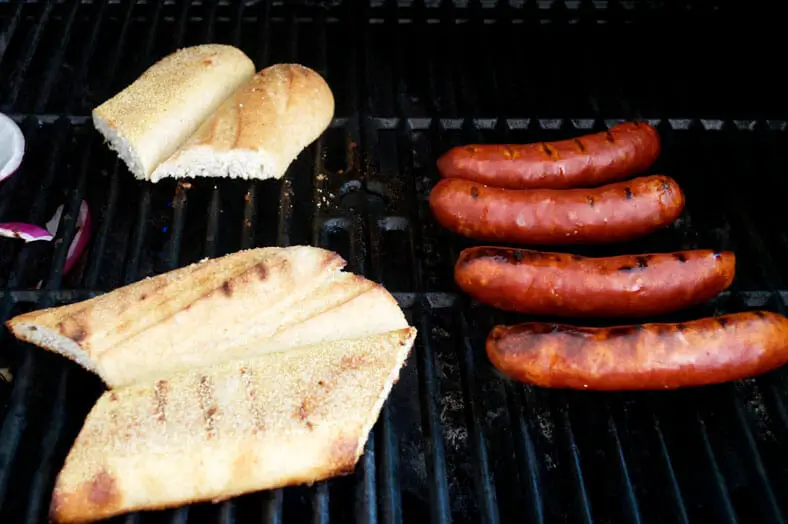
To really make a choripan as it should be, you’ll need to cook your chorizo over the low, slow and smoldering charcoal of an asado. When it comes to the sausages themselves, try to find or make chorizo that is ~70% beef and 30% pork, if you can help it. Ideally, it will also be seasoned with spices like paprika and aromatics like nutmeg or cloves.

Given that an asado is an event that can last for hours, making a choripan might seem impractical, but there are ways that we’ll suggest to make the process overall a little quicker.
Chimichurri
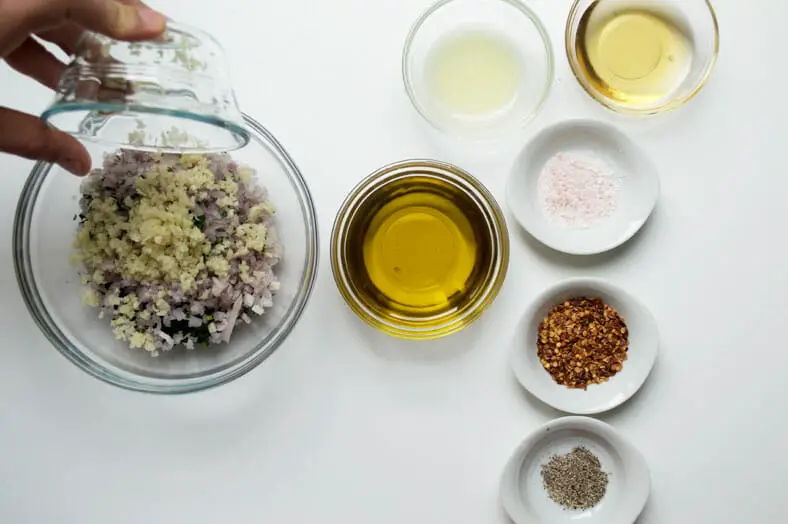
As for the chimichurri, there’s no standard way to make this delectably distinct sauce, and you might come into hundreds of different versions of the sauce itself. The most traditional ingredients in a chimichurri are (fresh) parsley, garlic, onion, (dried) oregano, vinegar and oil. From there, you might see calls for chili peppers or anything else, which is completely up to you to decide whether or not to add.
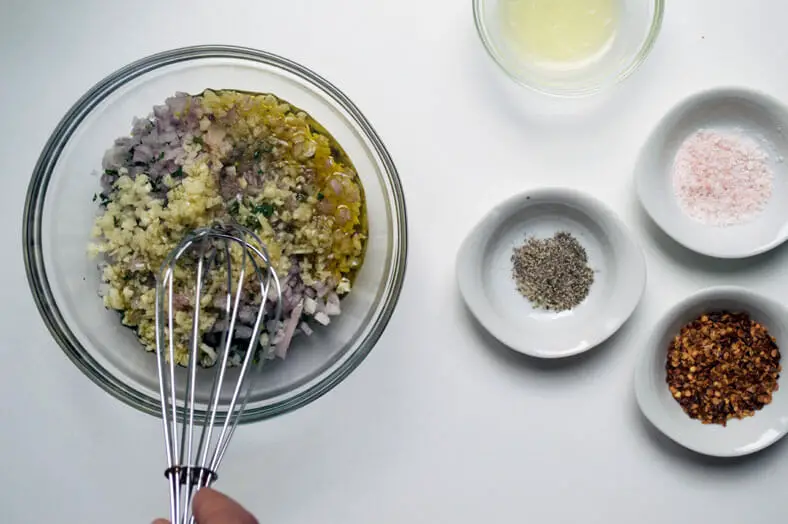
To make the chimichurri, simply chop and combine your ingredients into a large bowl, then add in your oil and vinegar. When chopping your ingredients – especially the parsley – your goal isn’t to create a pesto made from finely diced leafy greens but rather one with robust chunks of your greens still intact.


Let the mixture sit together for at least 30 minutes while the flavors meld together, then you’re done!
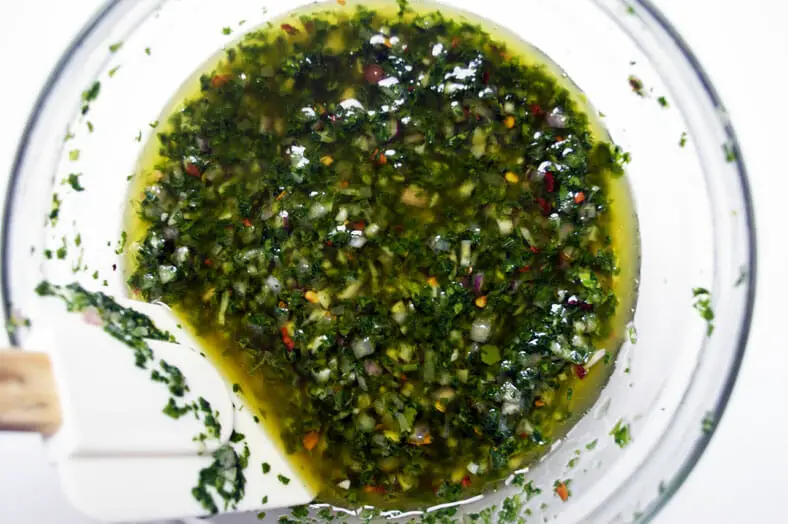
Our Take on the Recipe
Given the incredible simplicity of choripan as it was, we wanted to make sure that our version of the recipe was a) easy to make in a practical amount of time and b) included chimichurri. For those very reasons, we came across this recipe that fit the bill for our ideal resource recipe.
Of course, that’s not to say that we didn’t make any small tweaks to it. As we mentioned earlier, one of our goals with the recipe was to make it quicker, more practical and untied from the asado itself. That’s why you’ll see the recipe calls for grilling the chorizo for several minutes over a medium flame.
From there, we changed the type of bread used in the choripan. Where our resource used hot dog buns, we used French baguettes. Another bread-related tweak – though by no means is it an authentic one – we saw elsewhere was the slight cooking of the baguette while the chorizo itself cooks. We liked that as well, so we lightly brushed our baguettes with a little butter and quickly grilled them as well. Again, this is totally optional and not necessarily an authentic tweak, but it did make for great tastiness all around.
As for the chimichurri, we added a shallot into the recipe mainly out of a love for shallots, and we swapped in dried ingredients like chili flakes and oregano in place of their fresh equivalents. It seemed like this was more common (and easier) to do for chimichurri, so we figured we’d go this route since we’ve already added enough unnecessary complexity into the recipe with grilled baguettes.
Otherwise, there’s very little else that needs to be done for a delicious choripan. Especially when done on the grill, it’s so easy and simple to make, and it makes for a fun, quick meal!
Enjoy!
How do you prepare your choripan? Have you done it via an asado? Comment below!
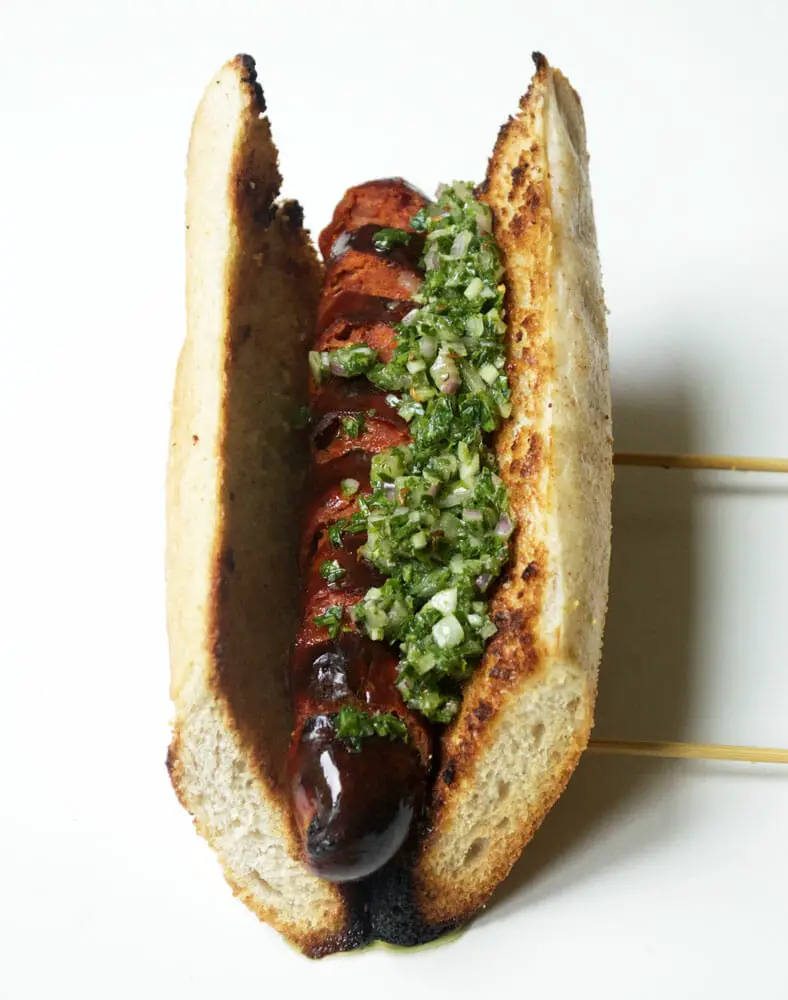

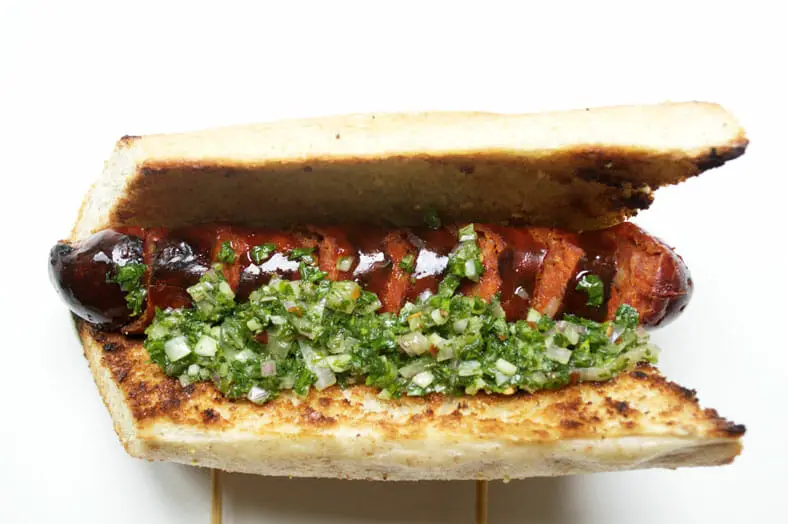
Choripan + Chimichurri
- Total Time: 40 minutes
- Yield: 4 people 1x
Description
Choripan + Chimichurri with pickled red onions.
Ingredients
Choripan
- 8 chorizo sausages
- 2–3 long french baguette, cut into pieces of the same length as your chorizo and then cut to open up like a sandwich
- 2 tablespoons butter, melted (optional spread on bread)
- pickled red onions (optional garnish)
Chimichurri
- 2 big handfuls of parsley (ideally flat leaf Italian), chopped to make at least 1 cup
- 4–5 cloves garlic, minced
- 2 small shallots, minced
- 1/4 cup olive oil (ideally extra virgin)
- 1 teaspoon sea salt
- 1 teaspoon freshly ground black pepper
- 1 teaspoon chili pepper flakes
- 2 tablespoons fresh oregano leaves (optional)
- 3 tablespoons red wine vinegar
- 2 tablespoons lemon juice
Instructions
Stage 1 – Make Chimichurri Ahead of Time
- In a medium sized bowl, add your parsley, garlic, and shallots
- Mix in your olive oil and stir well, then add the sea salt, black pepper, chili pepper flakes and oregano. Combine until all spices are evenly distributed
- Next, mix in your red wine vinegar and lemon juice
- Mix well and place the chimichurri in the fridge. You want the flavors of the different ingredients to meld together before it’s time to dress your choripan with it (at least 30 mins)
Stage 2 – Make your Choripan
- Start by preheating your grill to a medium/medium-low flame
- With your grill is ready to go, place your chorizo directly onto the grill and let it sit for about 4-5 mins on each side
- If you’d like (and we recommend it), brush your pieces of baguette bun with melted butter and place on the grill. Let the bun grill for 1-2 minutes or until it has some nice lightly toasted marks before taking off with your chorizo
- Take your chorizo off the grill and place directly into the baguette/buns. Pour chimichurri over your choripan along with any other desired garnishes, and enjoy!
- Prep Time: 30 mins
- Cook Time: 10 mins
- Category: Lunch
- Cuisine: Argentine
